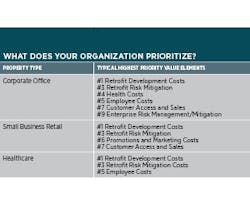AT&T has lofty energy goals – and they’re not done pursuing them.
The telecom giant partnered with the Rocky Mountain Institute (RMI) for the Portfolio Energy RetroFit Challenge in 2012 as part of an ongoing effort toward effective energy management. The company implemented more than 4,500 efficiency projects in 2011 alone, saving roughly $42 million annually, but wanted to go further.
“AT&T is very interested in the energy space, especially as it relates to improving the performance of our networks,” explains John Schinter, assistant vice president of energy and smart buildings for AT&T. “Over the course of the last five years, we’ve launched a phenomenal number of projects, about 18,000 with more than $190 million in savings. What we’ve found was that it wasn’t one or two large initiatives that would get us there – it was thousands across the whole organization that had the biggest impact.”
That challenge, intended to demonstrate that deep energy retrofits are not only feasible but financially sound, ended up being the precursor to RMI’s more comprehensive study of deep retrofit value. In a new guide, How to Calculate and Present Deep Retrofit Value for Owner-Occupants, the organization examines practical methods and models for calculating and presenting the value of such intensive undertakings.
Deep Retrofits Defined Offering superior energy savings over conventional retrofits – in the league of a 50% or more reduction in energy use – is a hallmark of deep retrofits. They can be expensive, but are truly financially prudent if pursued correctly, RMI says.
“What we’d call a standard retrofit would only address replacing lighting or some motors in the control room. A deep retrofit would be more extensive,” says Mike Bendewald, a senior associate on RMI’s Buildings Team. “It encompasses replacing more pieces of heating, cooling, and lighting equipment and could also include replacing windows or adding insulation to exterior surfaces. As a result of implementing these deeper measures, you’ll see a much larger energy savings.”
The guide lays out nine value categories to help FMs make the financial case for retrofits, including non-energy cost aspects (see right). Understanding what your organization values most is the first step. You don’t have to put together a presentation on all nine elements, but narrowing your pitch to the most promising ones (at least initially) gives your proposal a better chance of being heard by decision-makers (below).
“You want to think about all of the different ways that a retrofit can create value streams,” explains Bendewald. “One important value element is risk. FMs can really do themselves a favor by talking to the decision-makers about risk and answering questions like how the retrofit will be managed, whether they’re using the latest and most appropriate technologies, and how to manage the budget and timeline.”
AT&T started by creating accountability metrics with visible scorecards across its entire enterprise, but with a special focus on roughly 1,000 large, centrally staffed properties that comprise roughly 50% of the company’s footprint. The resulting data helped identify opportunities to invest strategically in efficient equipment and controls for further savings.
However, these improvements aren’t limited to organizations of AT&T’s scale. Facilities of all sizes can benefit if their leaders approach building upgrades from the right angle.
“The way most people think about these energy retrofits is with the idea of the simple payback. A total deep retrofit payback will likely not be within seven years on a simple payback basis, but when you’re just limiting your perspective to a simple payback, you’re doing yourself and your organization a disservice,” Bendewald says. “What you really need to think about is: what is this deep retrofit doing? Is it supporting the work that needs to take place and the people within this building?”
About the Author
Janelle Penny
Editor-in-Chief at BUILDINGS
Janelle Penny has been with BUILDINGS since 2010. She is a two-time FOLIO: Eddie award winner who aims to deliver practical, actionable content for building owners and facilities professionals.

